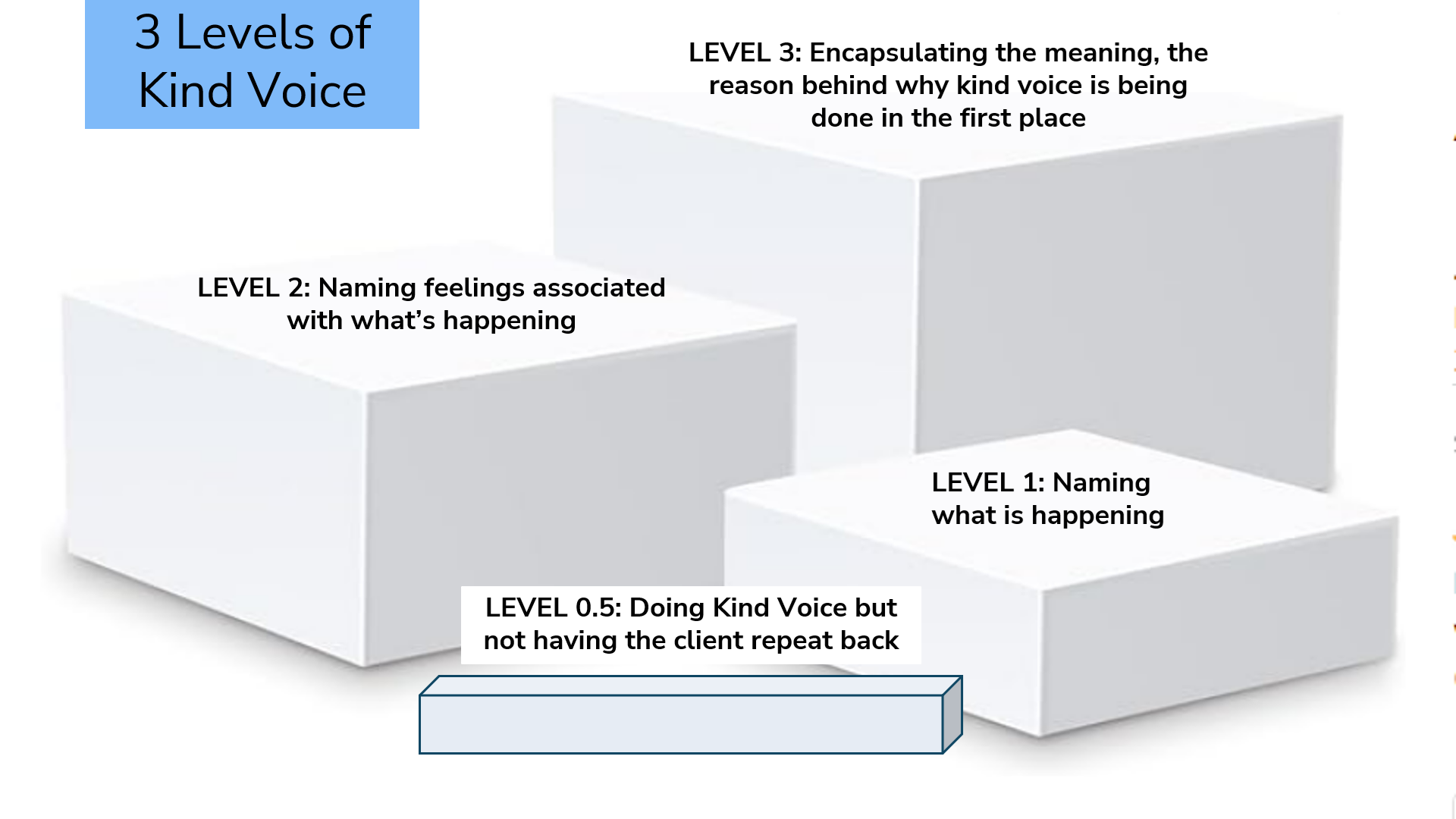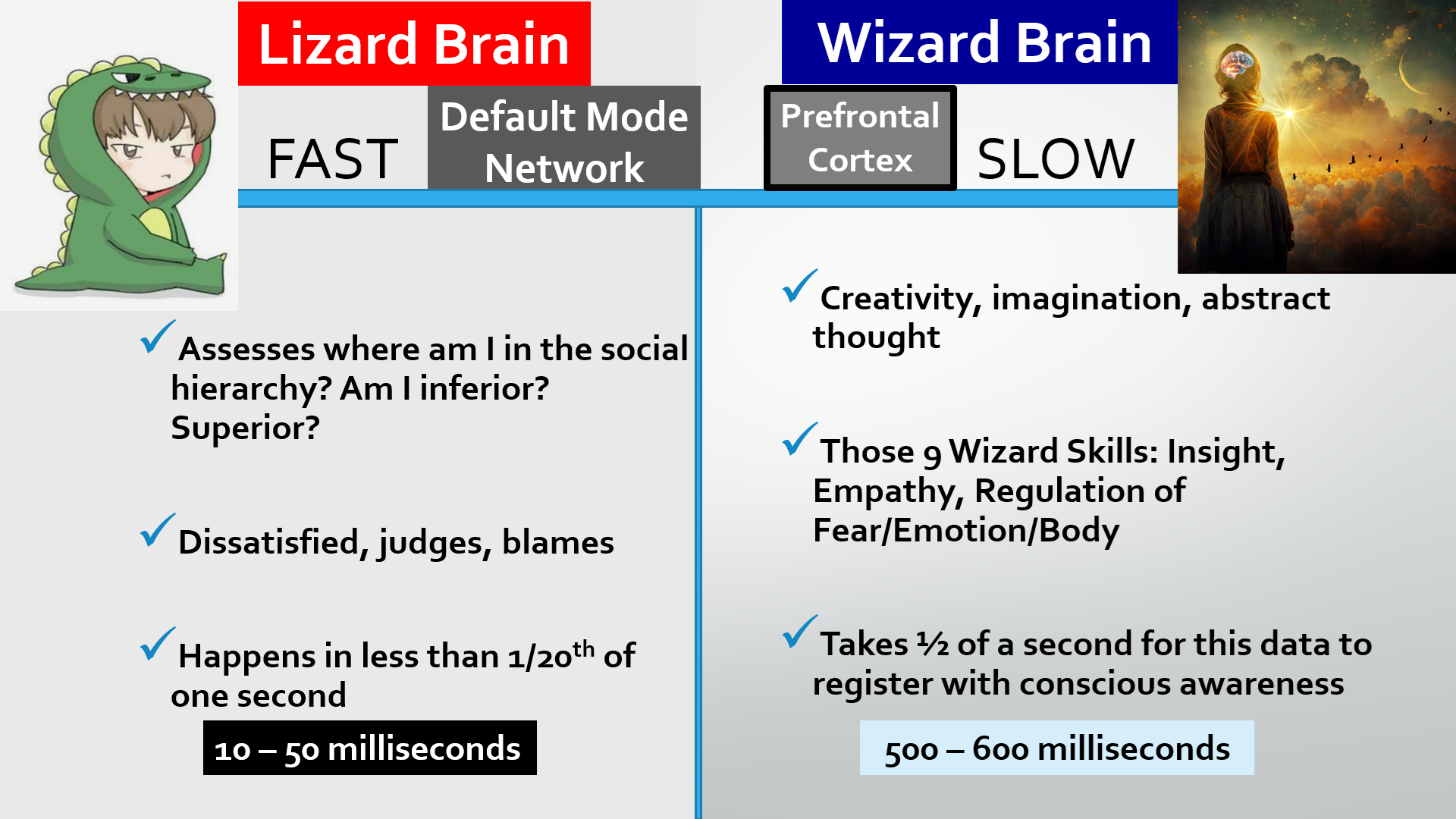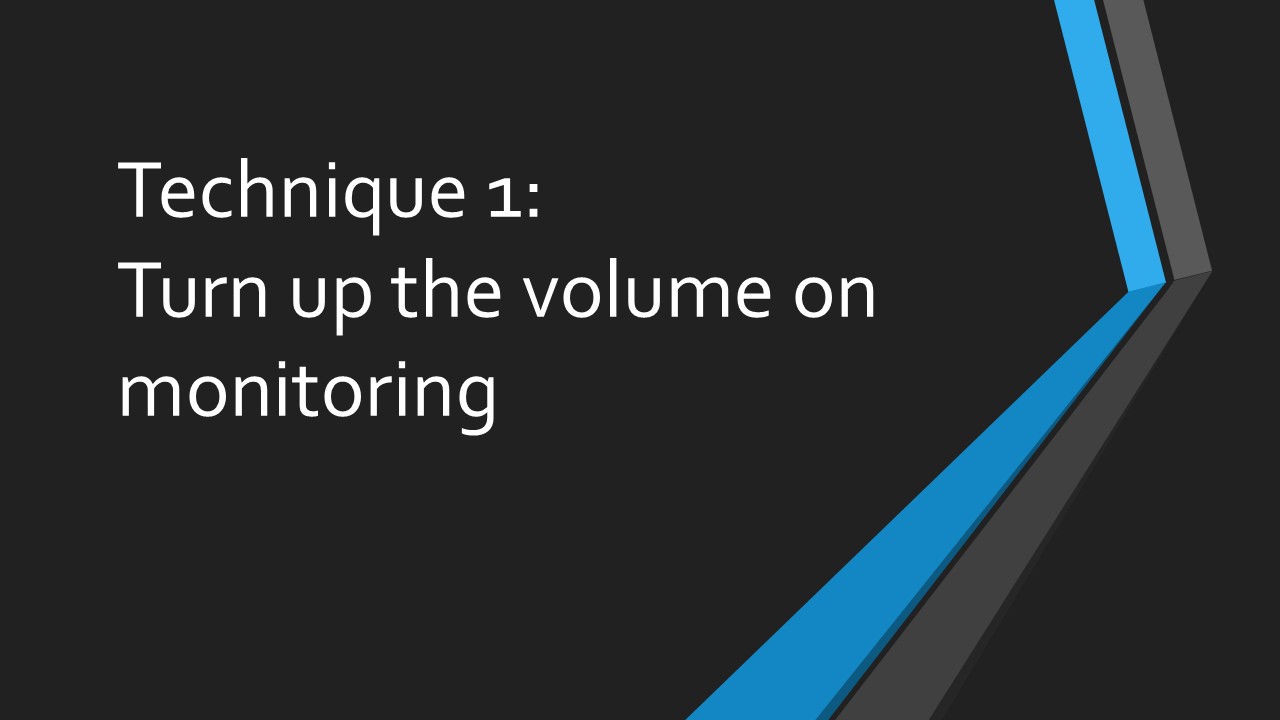
The Science of Kind Voice: How Self-Compassion Rewires the Brain
Since The I Can Change Workbook is newly published, I thought this would be a good time to share more about Kind Voice. I'd like to begin with a song called "Vision Keeper" by Bex Lipps. As you listen, I invite you to feel into a vision that you may have for your life, even if it's just a tiny seed.
(To read the story behind this song and my vision for Kind Voice, you can find it in this recent newsletter.)
On the back cover of the new workbook, it says "Kind Voice becomes the thread that ties science to lived experience" as the readers explore the nine Wizard Brain skills and the nine Levels of Integration.
Kind Voice is a practice used throughout the Brain Health Programs to help strengthen executive function and support self-regulation.
The History of Kind Voice
Kind Voice began in 2018 as a technique I used with clients. Since then, it has been taught in dozens of live lectures and small groups, and most recently to graduates of the Brain Health Programs in Executive Function, Neural Integration, and Advanced Neural Integration.
What is Kind Voice?
You might be wondering, "What exactly is Kind Voice?"
On the surface, it is a state of being rooted in warmth and understanding, similar to what develops through practicing compassion. Yet it is also something deeper. Think of Carl Rogers’ concept of unconditional positive regard, and for those familiar with Marshall Rosenberg’s Nonviolent Communication (NVC), remember that beneath its four components, he described NVC as a “quality of attention.” The state of Kind Voice is akin to these approaches, embodying the same spirit of compassionate attention and genuine presence described by Rogers and Rosenberg.
While initially described as a state of being, it also functions as a skillful way of relating.
I developed Kind Voice from my understanding of neurobiology, specifically what's called "reflective function" in attachment research.
You could say it's a way of paying attention and reflecting back the client's words so that they feel seen and heard. Like learning to ride a bike, it has nuances that take practice to master. There are "speeds" to it, where you are going faster or slower, deeper or more shallow, depending on what is happening with a client's "monitoring."
Here is a slide that shows the definitions of mind and regulation:

This slide illustrates how, in interpersonal neurobiology, regulation involves monitoring and modifying the flow of energy and information. This capacity to "watch the mind" is known as awareness of awareness, a core skill that Kind Voice helps strengthen.
In all of the Brain Health Programs, this ability is introduced as the first technique: turn up the volume on monitoring.
Kind Voice is the main way that we strengthen this skill. If you'd like to see it in action you can watch this free How to Do Kind Voice video on this page. 
The Three Levels to Kind Voice
During a session, Kind Voice involves reflecting the client's story in specific ways using three levels.

If it is done in a way that matches the needs of the client, this process helps strengthen executive function, what we call the nine Wizard Brain Skills.

The Wizard and Lizard Brain Metaphor
One goal of the technique is to help clients develop greater insight and empathy, regulate any fear that may arise while sharing their story, and strengthen their response flexibility in moments of emotional intensity. This practice can also be used between friends or family members and need not be limited to a therapeutic setting.
Kind Voice also emerged from my understanding of how to integrate shame. As shown in the next slide, this involves bringing together what I call the Fast System (the “Lizard Brain”) and the Slow System (the “Wizard Brain”).

In NICABM's course on compassion and shame, there's a powerful line: "Self-compassion fills the potholes of shame." This phrase captures how compassion supports the integration of the default mode network (DMN) --the brain region referred to as the "lizard brain" in the Brain Health Programs. To activate the default mode network, researchers have participants recall a recent moment of shame or engage in self-criticism, as shown in the slide below.

Repeatedly activating this brain region can create some sense of calm, but it comes at a cost. In the Brain Health Programs, we call this a Harmful Safety Strategy, also known as Diesel Fuel.
This pattern can temporarily regulate the nervous system, yet it does not resolve the underlying shame driving the behavior.

Here are some example of the critical voice in action:

The four-step cycle shown below illustrates how shame and self-criticism can repeat in predictable patterns. A detailed explanation is beyond the scope of this post.

There is a healthier way to calm the nervous system, which I call the fuel of the Wizard Brain.
The Neuroscience of Self-Compassion
Practicing self-compassion helps integrate the default mode network with the rest of the brain. In the Brain Health Programs, this is known as a Helpful Safety Strategy or Electric Fuel.

Congratulations if you made it this far in the blog post!
If you'd like to learn more about Kind Voice, there is a $20 Workshop called "Fear Regulation: Going from Critical Voice to Kind Voice," and a $99 Workshop called "Kind Voice: The Extended Version," that includes the above workshop plus an additional five hours exploring the science behind the technique.
Kind Voice is a core practice within the Brain Health Programs, where participants learn to integrate self-compassion and executive function skills. A new cohort is being formed, so feel free to reach out if you're interested in joining us.
Learn more about the nine Wizard Brain Skills curriculumand the nine Levels of Neural Integration curriculum. For student feedback, program benefits, and an overview, see the Brain Health Programs page
I also plan to host Kind Voice Cafes to teach the practice in greater depth than can be conveyed through a blog post or recorded workshop. Be sure you're on my newsletter, (which you can join by entering your information at the very bottom of the home page,) to receive announcements. I look forward to sharing this work more widely and having graduates of the program in attendance to assist in breakout practice rooms.
In kindness
Heidi




